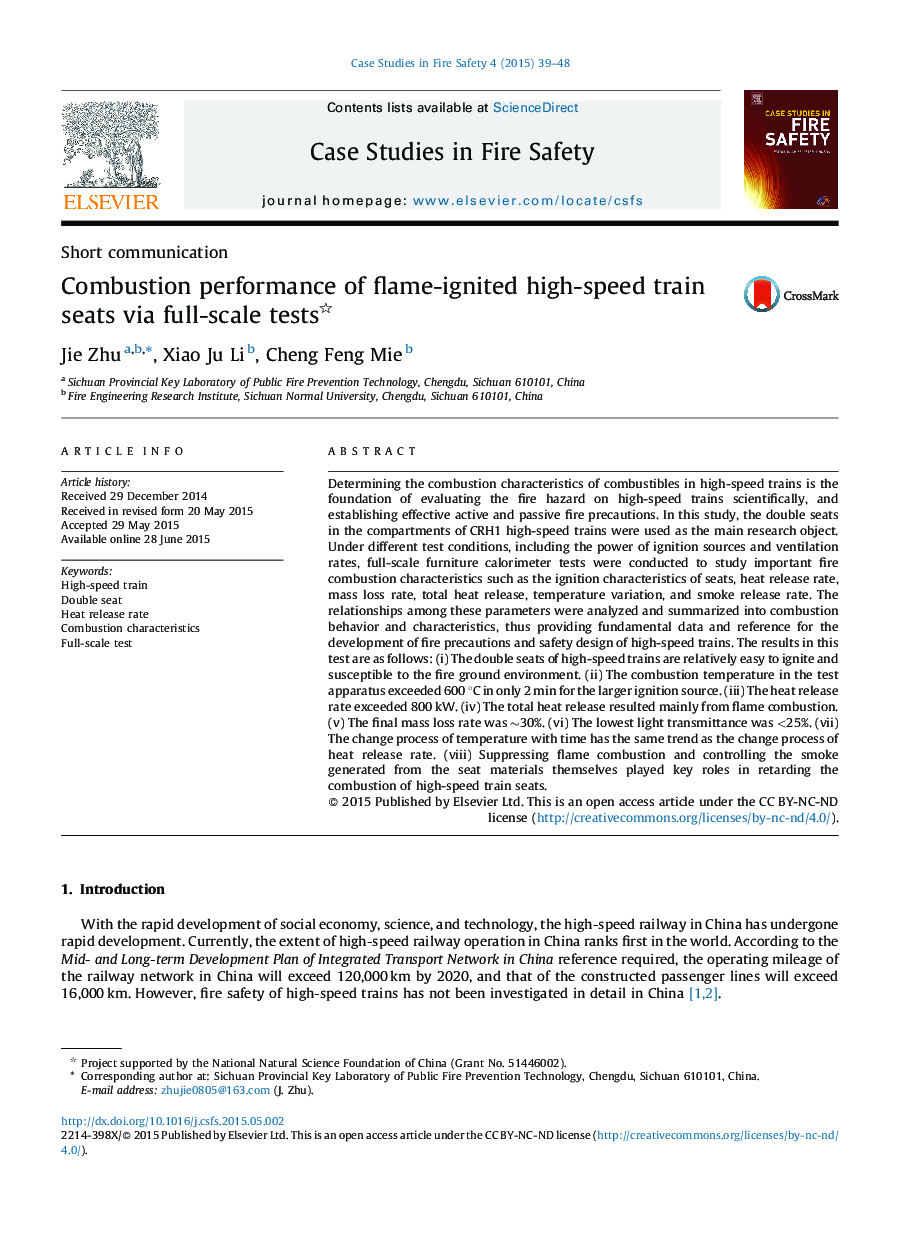| Article ID | Journal | Published Year | Pages | File Type |
|---|---|---|---|---|
| 250567 | Case Studies in Fire Safety | 2015 | 10 Pages |
Determining the combustion characteristics of combustibles in high-speed trains is the foundation of evaluating the fire hazard on high-speed trains scientifically, and establishing effective active and passive fire precautions. In this study, the double seats in the compartments of CRH1 high-speed trains were used as the main research object. Under different test conditions, including the power of ignition sources and ventilation rates, full-scale furniture calorimeter tests were conducted to study important fire combustion characteristics such as the ignition characteristics of seats, heat release rate, mass loss rate, total heat release, temperature variation, and smoke release rate. The relationships among these parameters were analyzed and summarized into combustion behavior and characteristics, thus providing fundamental data and reference for the development of fire precautions and safety design of high-speed trains. The results in this test are as follows: (i) The double seats of high-speed trains are relatively easy to ignite and susceptible to the fire ground environment. (ii) The combustion temperature in the test apparatus exceeded 600 °C in only 2 min for the larger ignition source. (iii) The heat release rate exceeded 800 kW. (iv) The total heat release resulted mainly from flame combustion. (v) The final mass loss rate was ∼30%. (vi) The lowest light transmittance was <25%. (vii) The change process of temperature with time has the same trend as the change process of heat release rate. (viii) Suppressing flame combustion and controlling the smoke generated from the seat materials themselves played key roles in retarding the combustion of high-speed train seats.
